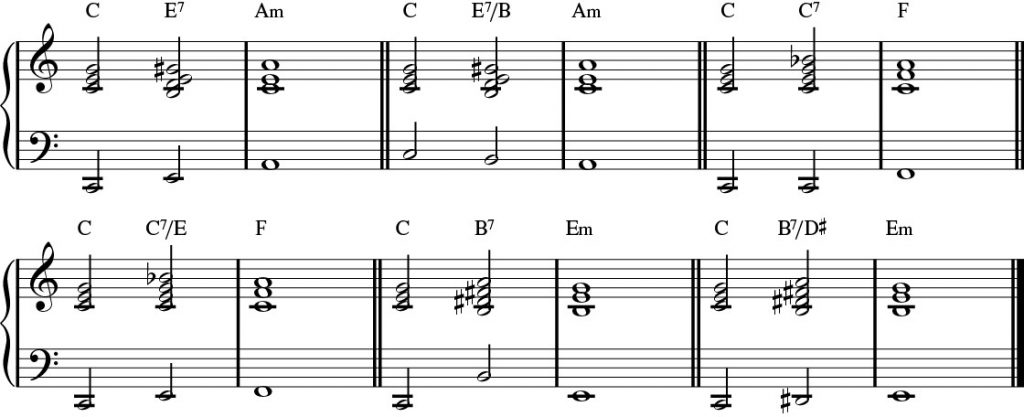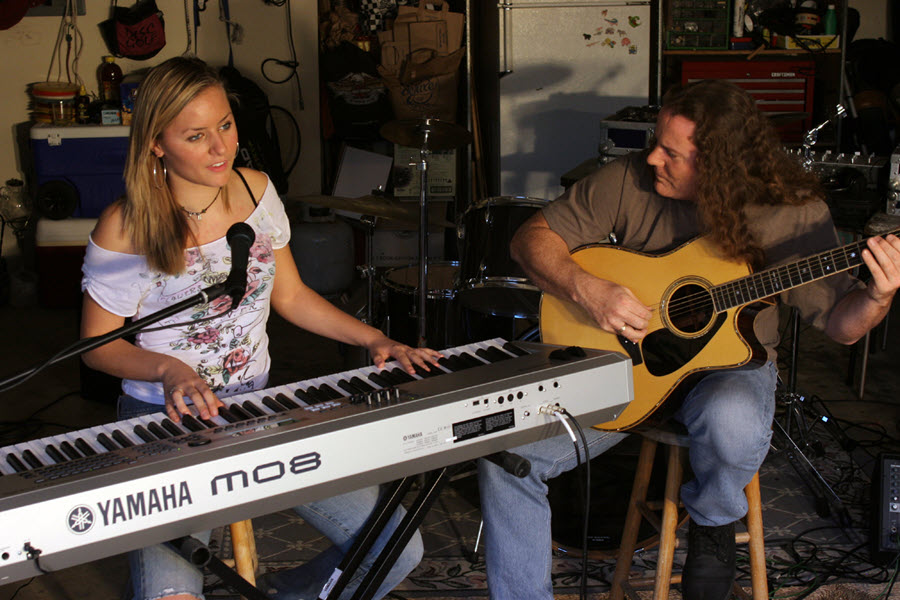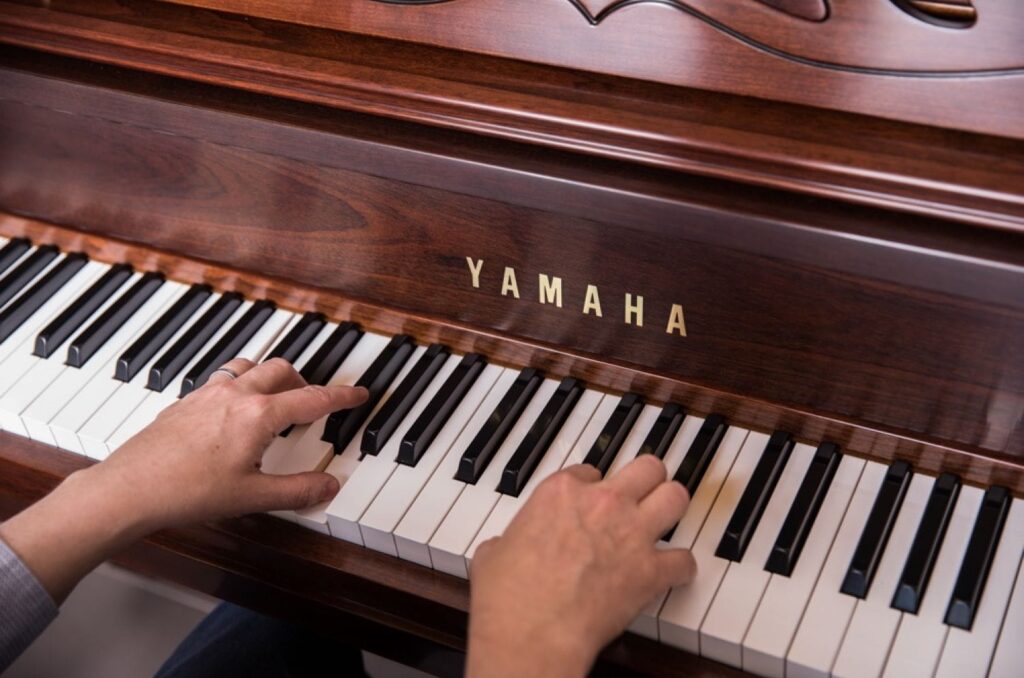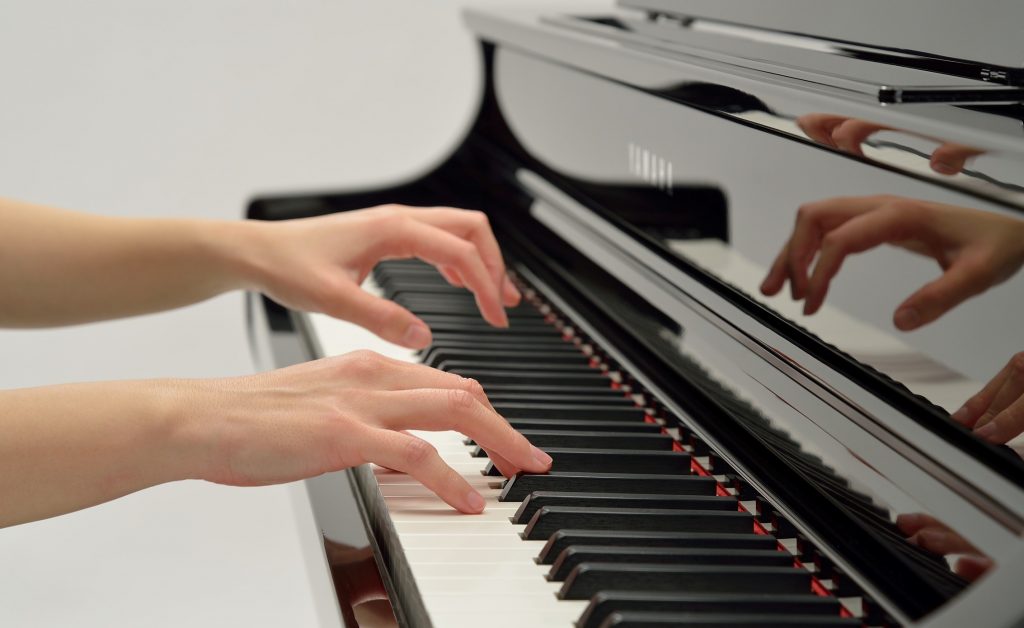Tagged Under:
Functional Harmony, Part 1
Using tension and release to enhance chord progressions.
In a recent posting, I described how a Dominant seventh chord has an inherent tension that wants to be released by resolving into a triad a fourth above / fifth below (i.e., G7 wants to resolve to C). This comes from a scale having a Dominant seventh chord on its fifth step (i.e., G7 if we’re talking about the scale of C) that wants to resolve back to the key center of the scale, the I chord (in this case, C).
This kind of “functional harmony” can be used to add more chords to a chord progression. Such added chords are often called passing chords because they help to create logical movement between two chords that seems to set up our ears to anticipate the next chord that follows.
Setting Up Other Scale Tone Chords
Let’s look at how we can use the Dominant seventh chord to set up various scale tone chords. In this example, they are built on the C Major scale (i.e., the key of C):

Let’s say you want to go from a C Major chord to an A minor chord. If you count up a perfect fifth from A (that is, seven half steps higher), you come to E. And E is the fifth step of an A Major or A minor scale, so an E Dominant seventh chord (E7) can be used as a passing chord to set up the A minor.

Note: In this, and the following two audio examples, the chords are played twice; the second time around, I add left-hand bass notes to help reinforce the sound.
In the analysis below the notes in the above example, I am calling the E7 chord a V7 of the vi chord. In traditional music theory this is called a secondary dominant chord. Basically, it means that the chord does not come from the current key center, so it has some notes from outside the key signature, but it works well to set up the following chord.
Let’s do the same thing to move from C to F:

Here we only have to change the C Major triad to a C Dominant seventh to get the “pull” that wants to resolve to the F.
One more example, this time getting a C major triad to connect to an E minor:

Now let’s take a very common four-chord progression and show how you can use these passing chords for some additional color:

Finally, here’s an example that uses Dominant seventh chords to set up each scale tone triad, with a little melodic figure to make it more interesting:

Note that I chose to skip the seventh step scale tone chord and just finish the example with the V7 (G7) resolving back to the I (C).
Changing the Bass Note
To get some variety in these progressions, you can use notes other than the root tone in the left hand (bass) for the passing chords:

Let’s Get Fancy
Let’s finish up with something a bit tricky that comes from deeper jazz harmony, but is related to this Dominant seventh resolution concept. The idea is that Dominant seventh chords that are a tritone (six half steps higher) apart from each other can be used interchangeably. You can think of this tritone interval as raising the fourth step of the scale, or lowering the fifth:

Both chords share some important common tones, like their third and sevenths, which are the tension notes that want to resolve.

Let’s look at how this works when going from the I chord to the IV chord:

In the above example, the E (the third) and B♭ (the seventh) of the C7 chord are the notes that want to resolve to the F and A of the F major chord. When we change the chord to an F#7, the same tension notes are present (E is now the seventh, and A# — which is the same as a B♭ — is the third), and while they usually would want to resolve into the B and D# of a B major chord, they sound equally good resolving into the F chord. In the third variation above, I modified the F#7 chord to have a lowered fifth, which keeps a C note constant in all three chords, which is the root of the key. This sounds really good, and is a common treatment used in R&B, gospel and jazz music.
Click here to read Part 2.
All audio played on a Yamaha P-515.
Check out our other Well-Rounded Keyboardist postings.
Click here for more information about Yamaha keyboard instruments.














